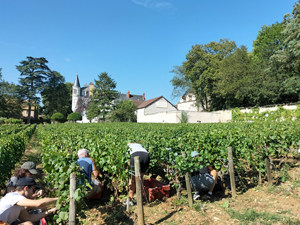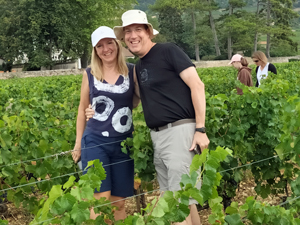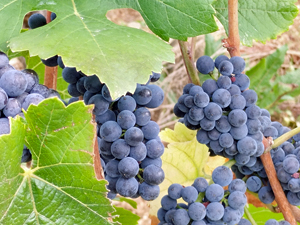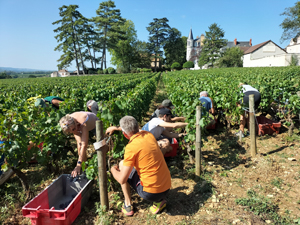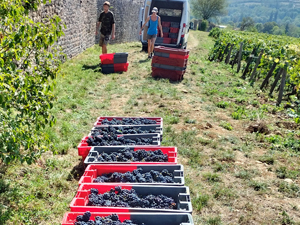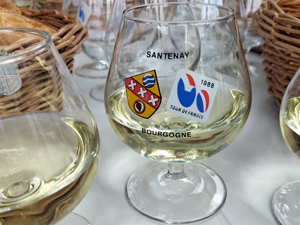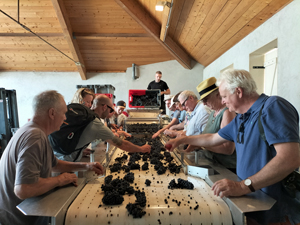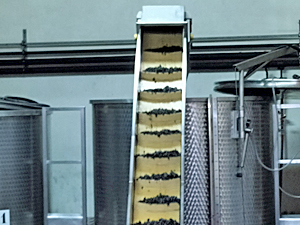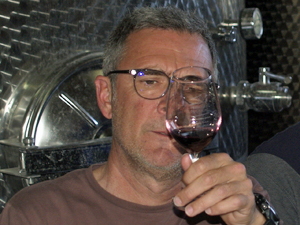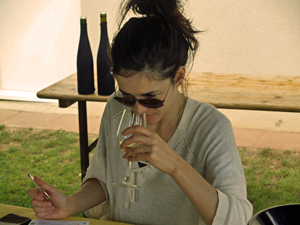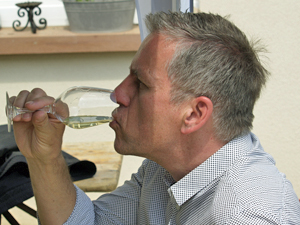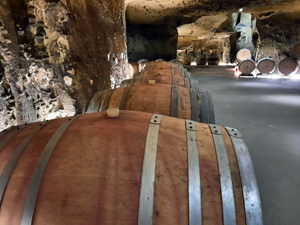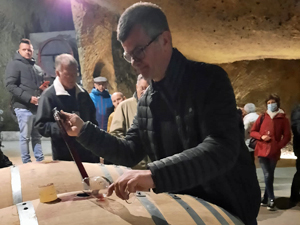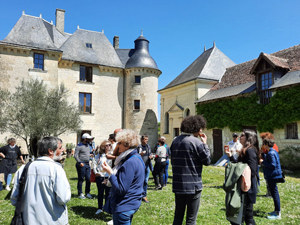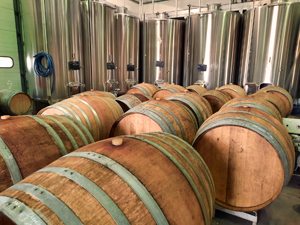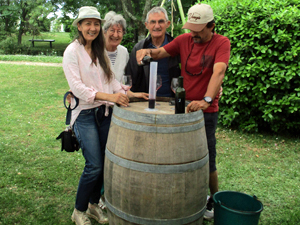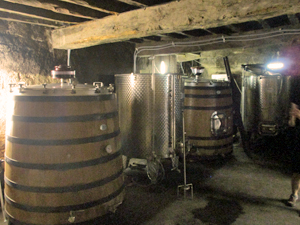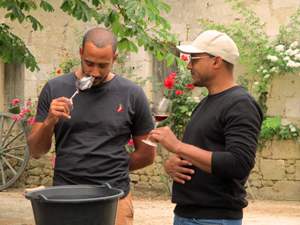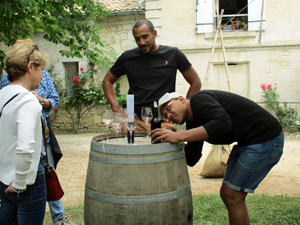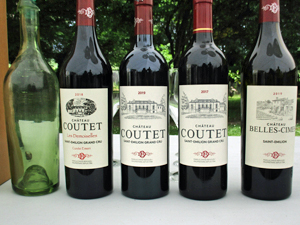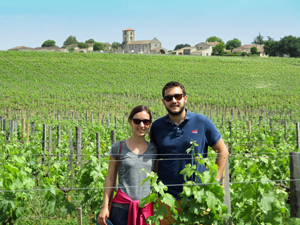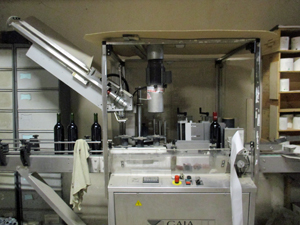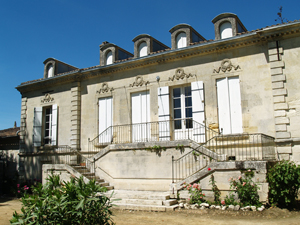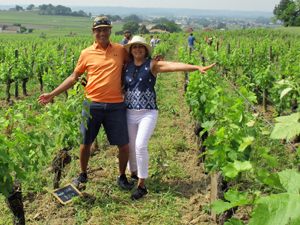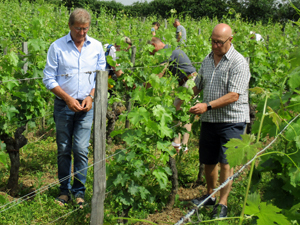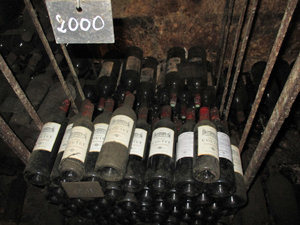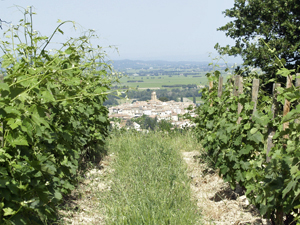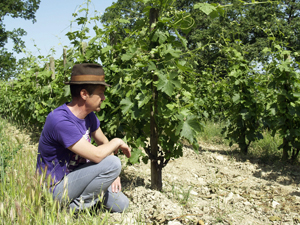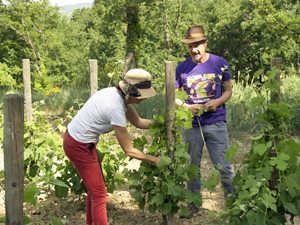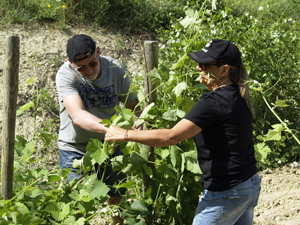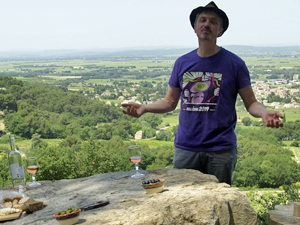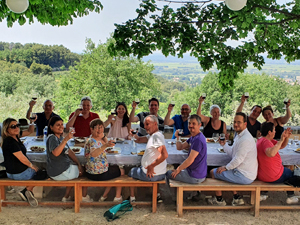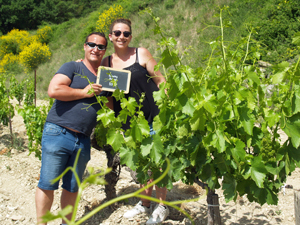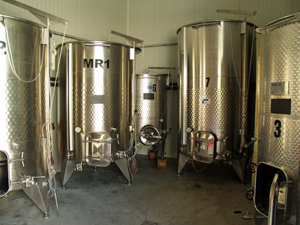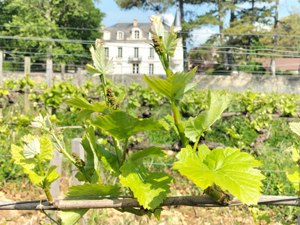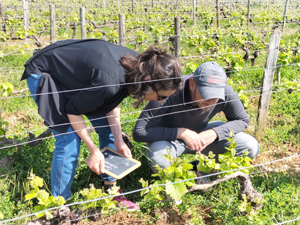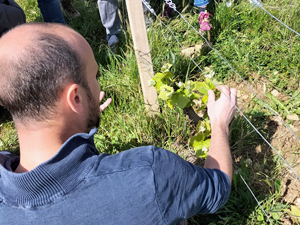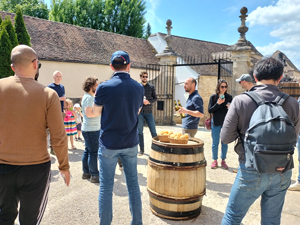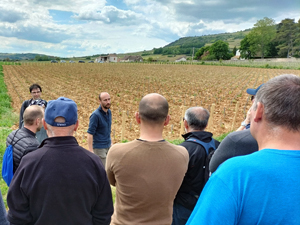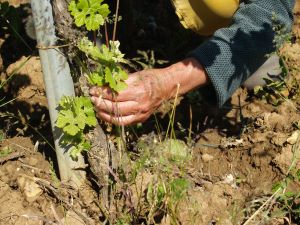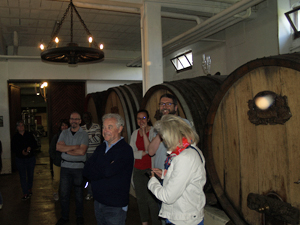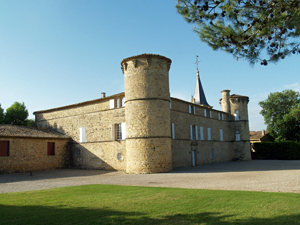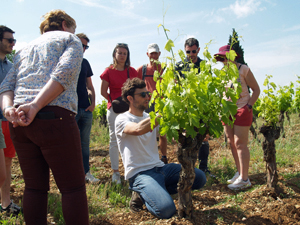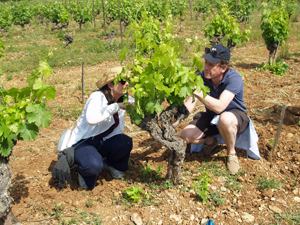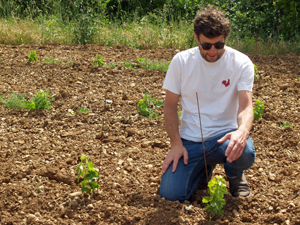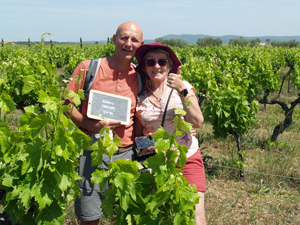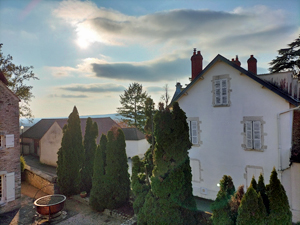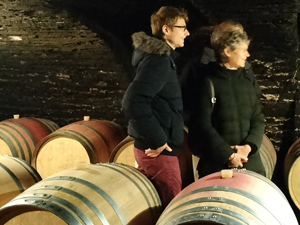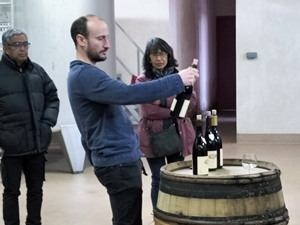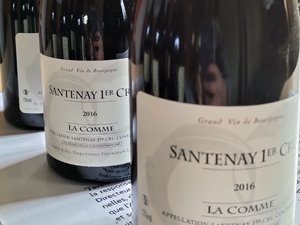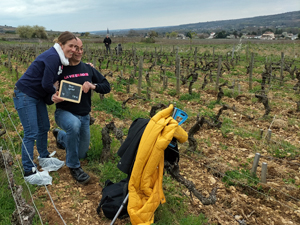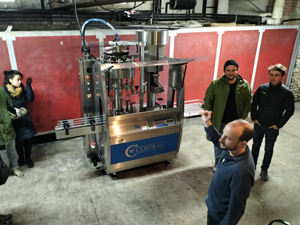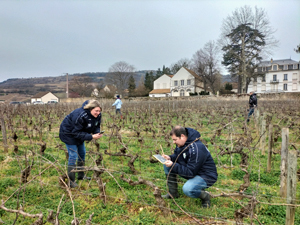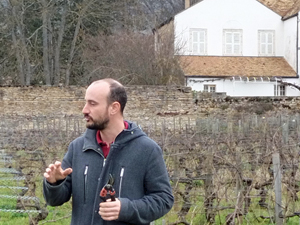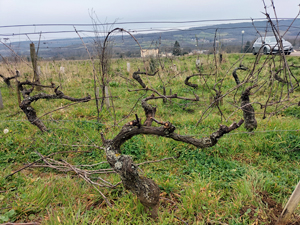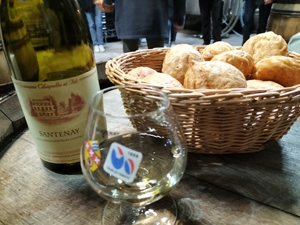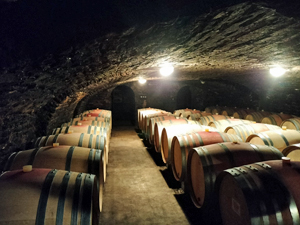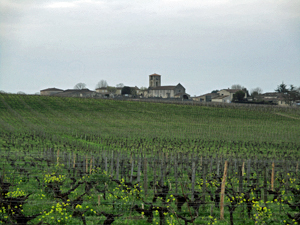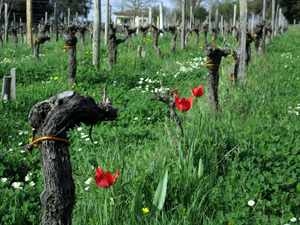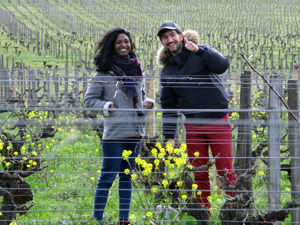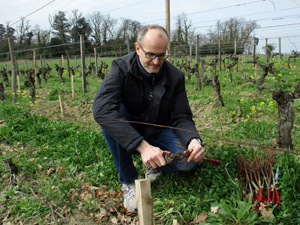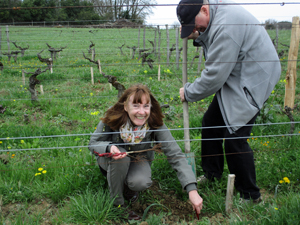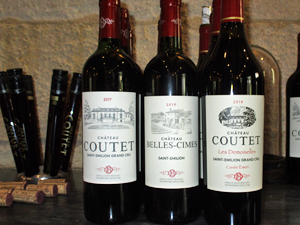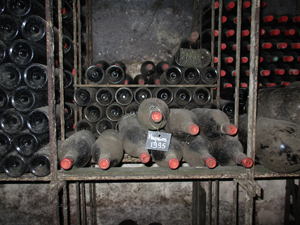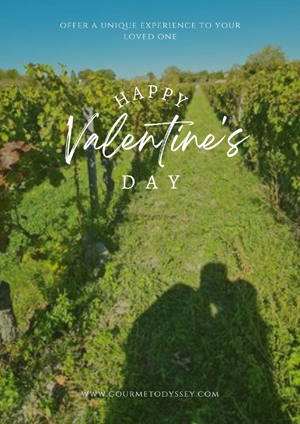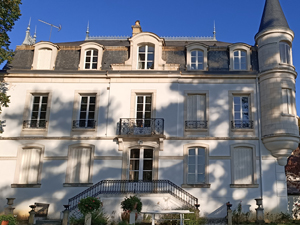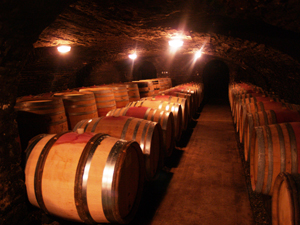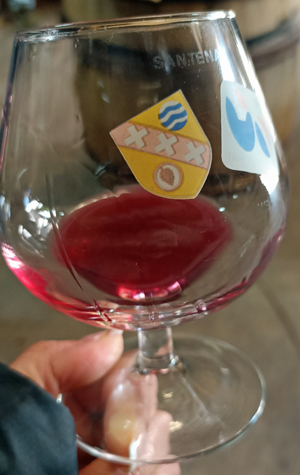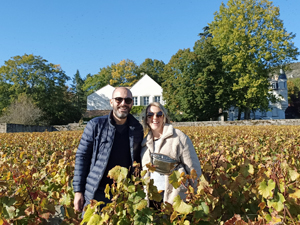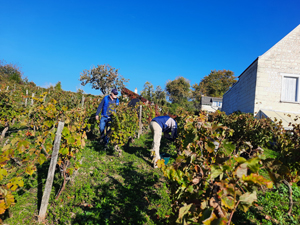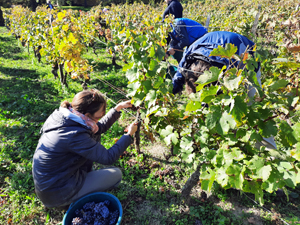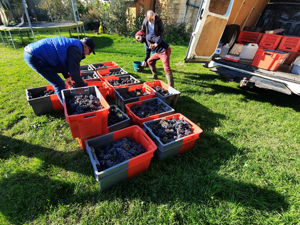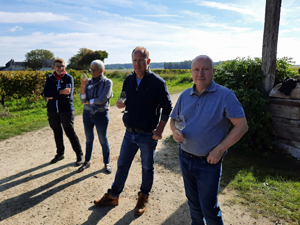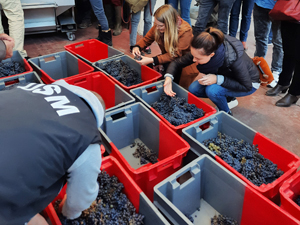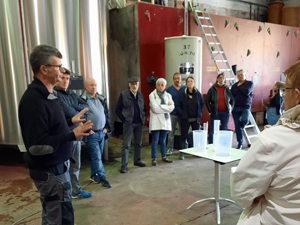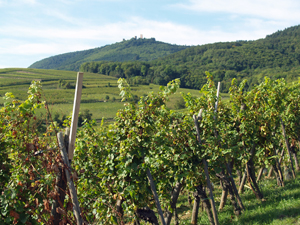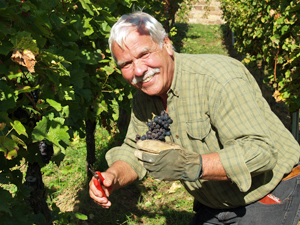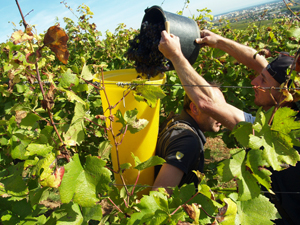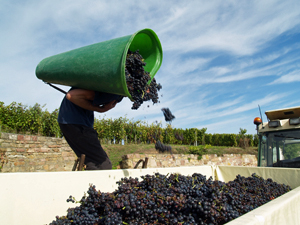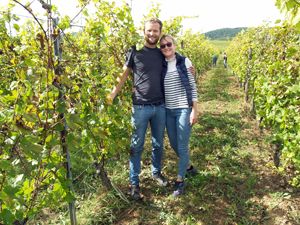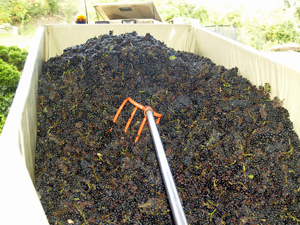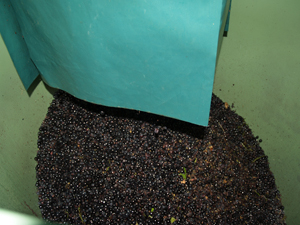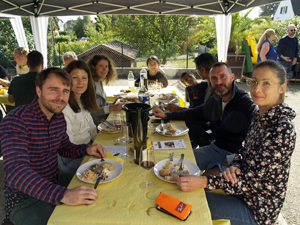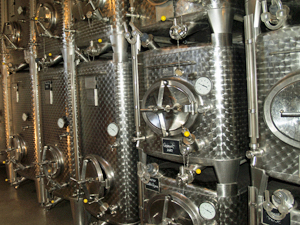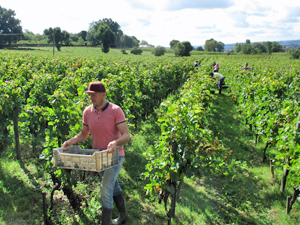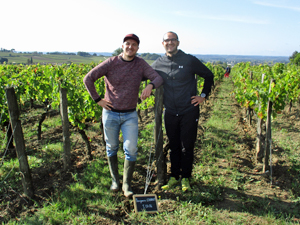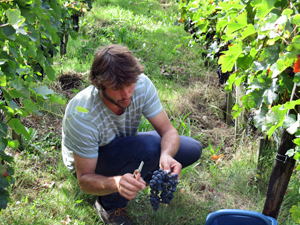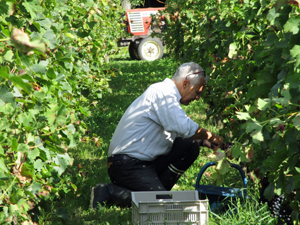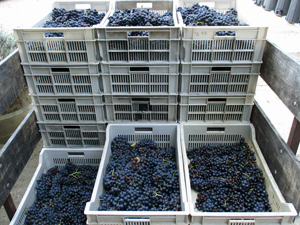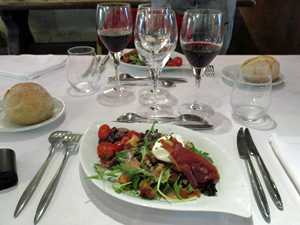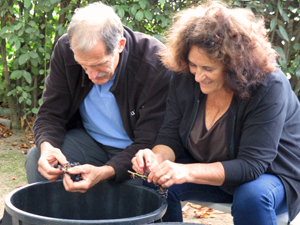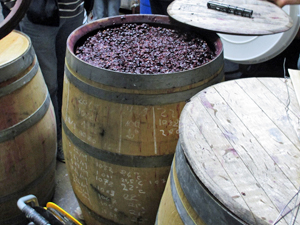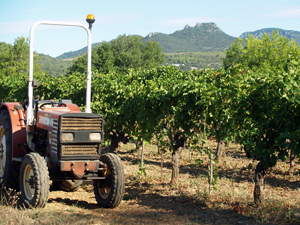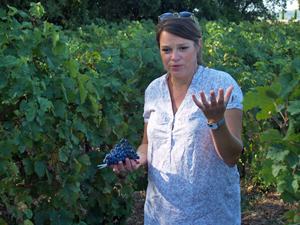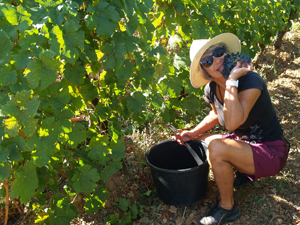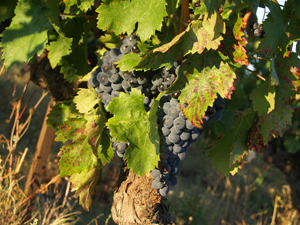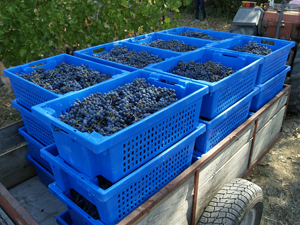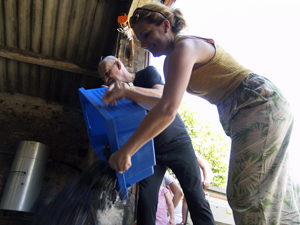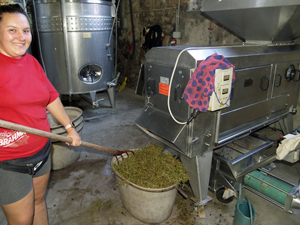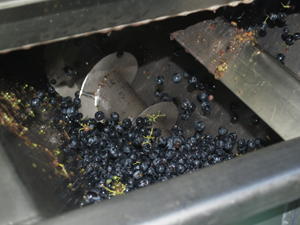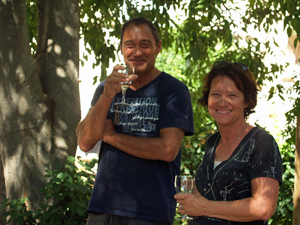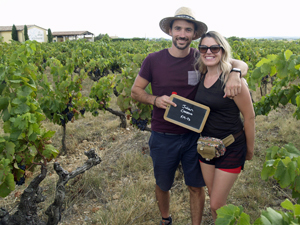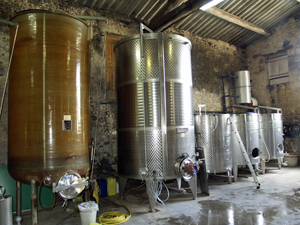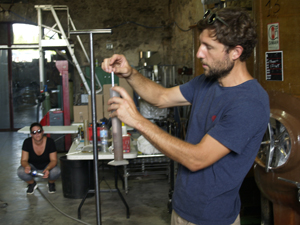After the introduction to the day by Mark, the founder of Gourmet Odyssey, and Céline, the winemaker at Domaine Stentz-Buecher, we made our way to the Steingrubler grand cru vineyard with Céline, her father, Jean-Jacques, and a few of the winery’s harvest team. Céline handed us each a pair of secateurs and a bucket, and explained which grapes to pick, and gave us some useful tips on how to avoid cutting our fingers!
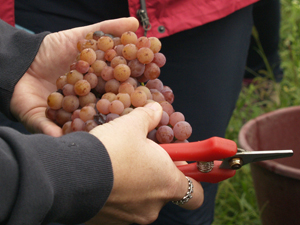
In two or fours, we were then assigned a row, and started the harvest. The grapes we were picking were of the Gewurztraminer variety, were in perfect condition, and tasted delicious! There were very few bad grapes to sort, so our buckets quickly filled up.
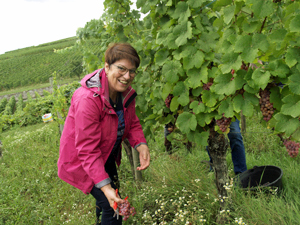
When the buckets were full, we passed them under the rows until they reached the central row of the porter. Here, we took it in turns for two people to carry a hop on their back, which we then filled up with the buckets of grapes. It’s surprising how heavy grapes can be, and when full the hopper can weigh between 40 and 50 kg.
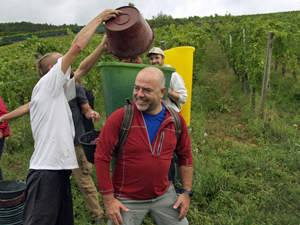
The porters then carried their load to the nearby trailer, climbed a ladder, and tipped the grapes in. You have to tip them over your shoulder, something which is a little difficult the first time, but our team of apprentice harvesters quickly got the hang of it!
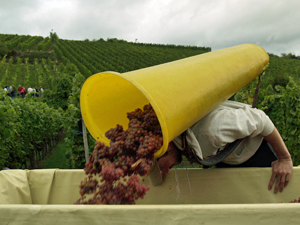
When we got to the top of the row, we then took another row and came back down. The slope made it a little harder to walk up and down, but also made it easier to pick the grapes because we could position ourselves to have the grapes higher up.
Once we had finished harvesting the plot of vines, we gathered around the trailer to admire our work, wash the sticky grape juice from our hands, and have a drink.
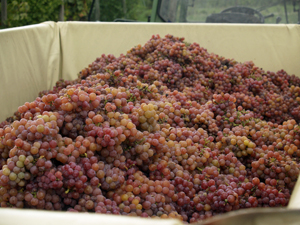
We then headed to the Rosenberg vineyard to meet our adopted vines. The grapes had been picked earlier that week because they had already reached optimum maturity. We took a few minutes to take some pictures and admire the view across the vineyards and of the nearby châteaux.
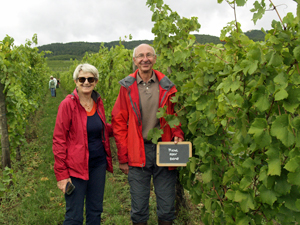
Back at the winery, we met up with Stéphane, Céline’s brother and fellow wine-maker. We helped our harvested grapes into the press by raking them out of the trailer and into the press below.
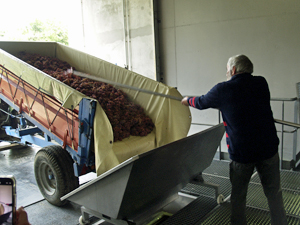
Stéphane explained how the press works, and how the cellar had been designed to use the force of gravity, as opposed to pumps, to get the juice into the vats. The first vat is a holding vat, where the juice will rest for between 24 and 48 hours during the “débourbage” process as the small solid particles of skin, pips, and stems that managed to get through the press, settle on the bottom of the vat and the juice becomes clearer.
We then headed back out into the courtyard where Céline had prepared a well earned wine tasting session for us, starting with a delicious naturally sparkling Crémant d’Alsace. For each of the following wines, we had to say what aromas and tastes we could identify, and try to guess which of the Alsace grape varietals it was. An easy task for Céline, but not quite so easy for the rest of us!
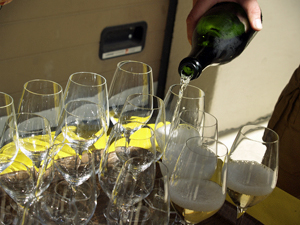
Céline first served us the 2019 Pinot Gris Rosenberg, the wine chosen for the Gourmet Odyssey Wine Experience, followed by the 2018 Sylvaner Vielles Vignes, the 2017 Riesling Steingrubler Grand Cru, and finishing with the 2019 Gewurztraminer Hengst Grand Cru.
We then continued the tasting over the harvesters lunch with the 2019 Pinot Blanc, 2020 Pinot Noir, and 2019 Gewurztraminer Rosenberg to accompany the local charcuterie, cheeses and apple pie.
After lunch, we returned to the cellar, where Stéphane showed us the fermentation hall where the white wines start the process of transforming the sugar in the grape juice into alcohol. Stéphane explained how he monitors the progress of these wines through the process, as we listened to the vats and casks gargle away.
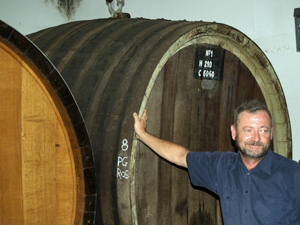
The Pinot Noir grapes don’t go into the press straight away. Stéphane explained how the berries are separated from the stems, and are then put into vats. The juice is clear in Pinot Noir grapes, the colour being found in the skin. Therefore to make red wine, the juice needs to be kept in contact with the skins to be able to extract the colour. Tannins are also found in the skin which adds body to the wine. During the fermentation phase carbon dioxide is released which pushes the skin to the surface, forming a solid cap. This cap needs to be broken and pushed down into the juice for the extraction of the colour and tannins to take place. At Domaine Stentz-Buecher this is done using the pigeage method.
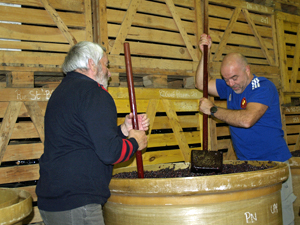
Stéphane explained pigeage and showed us how to use the large plungers to break the solid cap of skin and pips. We took it in turns to have a go, and realised that it is a very difficult job, and the cap is actually very hard to push down! The job gets easier as the fermentation progresses, but it’s still something that has to be done once or twice a day for each vat!
Before we knew it, the day had come to an end. We look forward to returning next year for the Vinification Experience Days, and learning about all of the work after the harvest to age the wines and prepare them for bottling.
Many thanks to all for making it such a great day.



